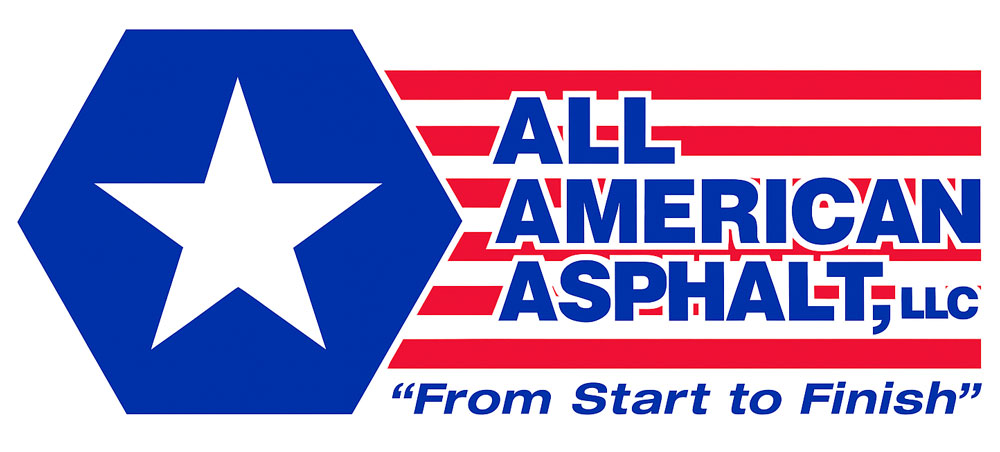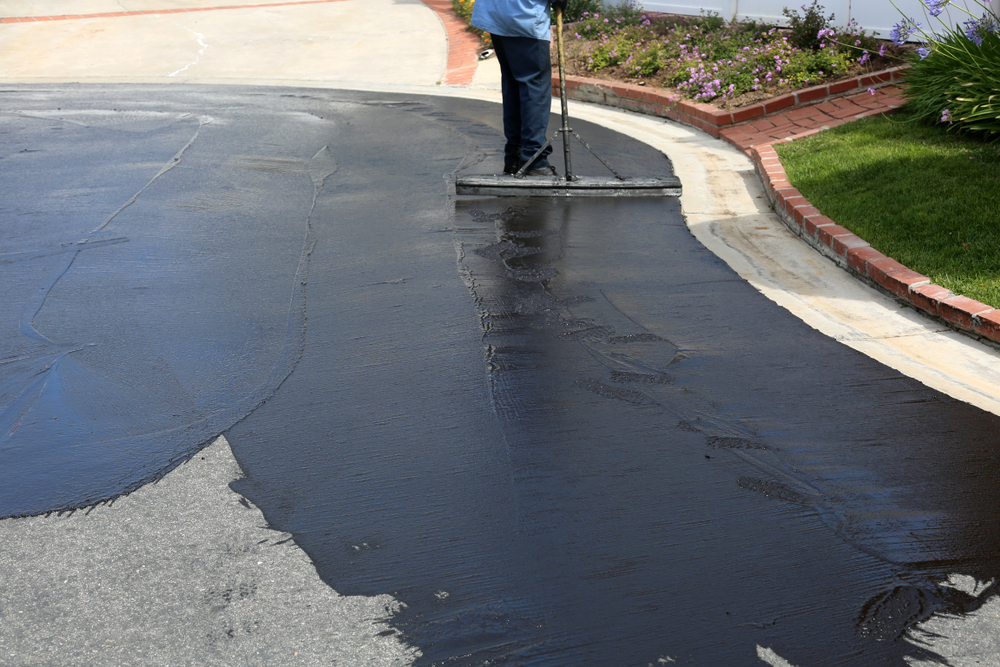
Florida’s warm, humid climate poses unique challenges to the durability of asphalt surfaces. For homeowners’ associations (HOAs) responsible for maintaining community roadways, understanding the nuances of asphalt preservation is crucial. The question of how often to reseal roads in Florida requires a comprehensive look at environmental stressors, material longevity, and proper HOA management practices. This article explores the ideal resealing frequency, the signs roads need attention, and how proper asphalt maintenance strategies can prolong the life of private roads in Florida communities.
Florida’s Impact on Asphalt
Florida’s subtropical climate is both a blessing and a curse for pavement. While the absence of snow and freeze-thaw cycles reduces the damage seen in northern states, the intense UV radiation, high humidity, and frequent rainstorms create a different set of problems. Heat accelerates the oxidation of asphalt, causing it to become brittle and more susceptible to cracking. At the same time, the combination of rain and humidity can infiltrate small fissures, eroding the base layer and leading to more extensive damage over time.
The annual hurricane season and sudden tropical downpours contribute further stress, especially if drainage systems are overwhelmed. Standing water is a major enemy of asphalt, seeping into cracks and destabilizing the base. Moreover, Florida’s coastal regions expose pavement to salty air, which can contribute to chemical breakdowns in road surfaces. For HOAs managing asphalt roads in this environment, timely maintenance isn’t optional—it’s essential.
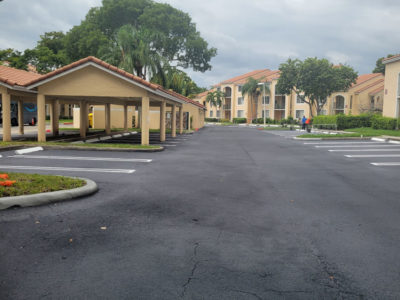
Recommended Resealing Frequency
Industry experts generally recommend resealing asphalt surfaces every three to five years, but that interval tightens in high-stress environments like Florida. For HOA asphalt maintenance in Florida, the sweet spot typically falls between every 2 to 3 years, assuming normal residential traffic. This schedule accounts for accelerated weathering from UV rays, moisture penetration, and oxidation common to the state’s climate.
Newly laid asphalt should not be sealed immediately; it typically needs 6 to 12 months to cure fully. After the initial curing period, the first sealcoat can be applied to protect the surface. From there, routine inspections should guide the resealing schedule. A well-maintained resealing cycle not only restores the rich black appearance of asphalt, boosting curb appeal, but also protects the underlying layers, extending the overall lifespan of the pavement by decades.
However, this frequency isn’t one-size-fits-all. Communities with heavier vehicular traffic, such as delivery trucks or construction vehicles, may require more frequent resealing. Likewise, if the roads show signs of premature wear—such as cracking, fading, or pooling water—it may indicate that a shorter maintenance cycle is necessary.
Signs It’s Time to Reseal
Even with a standard schedule, HOAs should regularly inspect roads for signs that resealing is due. The most apparent indicator is the graying or fading of the asphalt surface, which occurs as the binder oxidizes and loses its elasticity. When the surface no longer looks deep black, it’s a strong visual cue that the sealcoat has worn thin.
Cracking—especially alligator or spider-web cracks—indicates that moisture and air have begun to penetrate the asphalt surface. Left untreated, these minor imperfections can evolve into potholes, rutting, or complete subbase failure. Another warning sign is water that no longer runs off efficiently, pooling instead in low spots or worn sections. Standing water accelerates deterioration and signals compromised grading or a damaged seal.
Oil stains or chemical spills can also weaken the surface integrity of asphalt. If a road has several such areas, a new sealcoat can prevent further chemical penetration and restore a consistent protective barrier. Essentially, resealing is both a preventive and restorative measure—one that becomes increasingly critical with each passing season in Florida’s challenging environment.
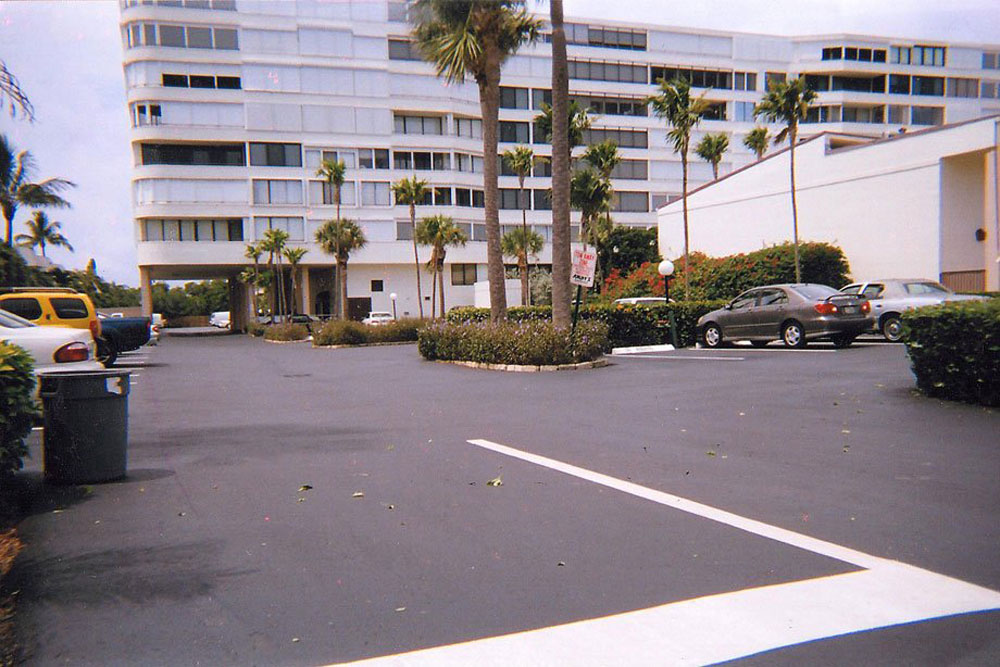
Cost-Benefit Analysis of Routine Resealing
It’s easy for HOAs to delay resealing in the face of budget constraints or competing priorities. However, the long-term cost of deferred maintenance often far exceeds the periodic expense of resealing. Properly sealed roads are less likely to require full-depth repairs, which are substantially more expensive and disruptive. For example, the cost to sealcoat a standard residential road might range from $0.15 to $0.30 per square foot, while repaving can exceed $3.00 per square foot, depending on labor and material costs.
Moreover, communities with well-maintained roads tend to maintain higher property values. Residents and prospective buyers notice curb appeal, and faded, cracked, or potholed roads can negatively impact perceptions of HOA management and neighborhood desirability. Investing in routine asphalt maintenance in Florida is, therefore, not only an infrastructure necessity but also a financial safeguard for the community.
In addition to avoiding major repairs, resealing can reduce liability. Poorly maintained roads increase the risk of accidents, especially in wet conditions. Uneven surfaces, hidden cracks, and loose gravel can all contribute to slips, falls, or vehicle damage—scenarios that could lead to insurance claims or lawsuits. By proactively managing maintenance, HOAs protect both physical assets and legal interests.
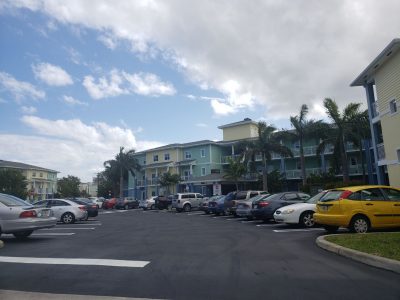
Best Practices for HOA Asphalt Maintenance in Florida
For Florida HOAs aiming to optimize their road maintenance strategy, developing a proactive, data-driven plan is key. Begin with a comprehensive inspection of all asphalt surfaces at least once per year. Record findings such as cracking patterns, drainage issues, traffic volume, and visible wear. Maintain a log of when roads were last resealed and anticipate future cycles, ideally creating a multi-year budget that accounts for regular maintenance.
Hiring a licensed and experienced paving contractor with familiarity in Florida conditions is critical. These professionals can help determine the best type of sealant—whether coal tar, asphalt emulsion, or environmentally friendly alternatives—and apply it using methods suited to local weather patterns. Timing is also crucial: resealing should ideally occur during the dry season (late winter through spring), when weather conditions allow for optimal curing.
Education and communication with community residents are also essential. Inform homeowners about the resealing schedule in advance, and explain the benefits of the process. Temporary road closures or traffic diversions may be necessary, so setting expectations can reduce friction. Encouraging residents to report signs of road damage ensures that the HOA can respond promptly, preventing minor issues from becoming major expenses.
Sustainability-minded HOAs may also consider incorporating recycled materials or permeable paving solutions for new installations, especially in areas with high water runoff. While these technologies may come with higher initial costs, they often offer long-term environmental and financial returns.
Conclusion
Ultimately, the question of how often to reseal roads in Florida depends on a range of factors—climate, traffic, materials, and community standards—but a general rule of every 2 to 3 years serves most communities well. By committing to regular inspections, responsive maintenance, and transparent communication, HOAs can ensure the longevity, safety, and aesthetic value of their roads for years to come.
Need a Paving Contractor Near You?
At All American Asphalt LLC, we’ve been proudly serving Fort Lauderdale and the surrounding areas since 2005, providing top-quality asphalt paving and seal coating for both commercial and residential projects. We take pride in our dedication to excellence, ensuring every job is completed on time and with clear communication every step of the way. With our A+ BBB rating, you can trust that we’ll deliver the best service possible. Don’t hesitate to reach out to us today for a free estimate – we’re here to help bring your project to life!
